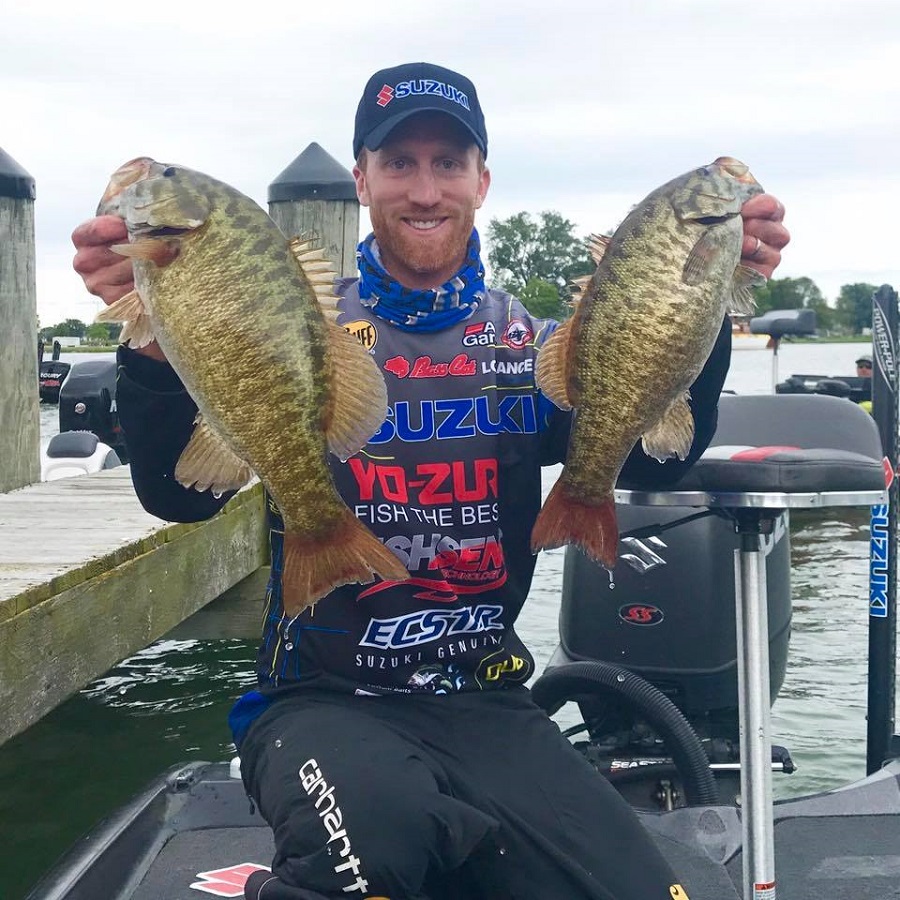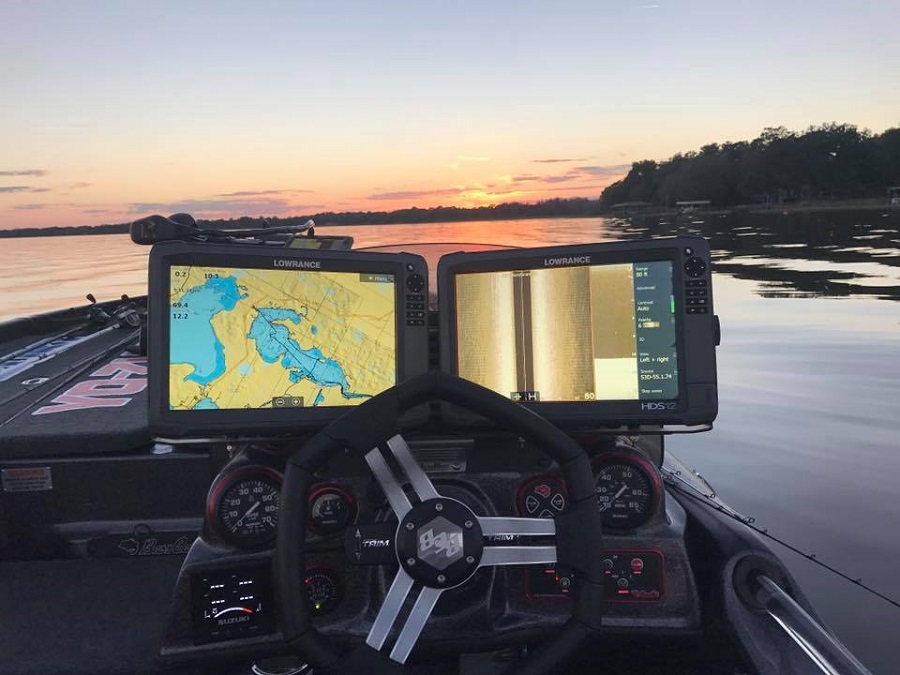Learning how to use your electronics can greatly help anglers locate and catch more bass, but the settings can often confuse the user.
Luckily, Lowrance units are ready to go right out of the box, but for advanced users, there are several things you can do to get the more out of your units.
Bassmaster Elite Series angler Brandon Card shares the settings he changes when he gets a new unit, the ones he leaves alone, and which ones he adjusts while on the water.
2D Sonar Set and Forget
When using traditional 2D sonar, Card makes some initial adjustments when he gets a new unit and for the most part, he sets them and forgets them.
READ RELATED: Lowrance Screenshot Interpretation | Fish Postitioning in Seasonal Temperature Changes | Shallow for Aggressive Feeders
#1 Ping Speed Adjustment for Lowrance Live View
The speed of the sonar pings can be adjusted to as fast or slow as an angler likes.
Card likes to keep it nearly at its max.
“I am just a notch or two down from the fastest speed, probably 90 percent. This makes what you are seeing below the boat ‘live’ and there is not as much of a delay,” he shares.
 #2 Surface Clarity Settings Make It Easier To See
#2 Surface Clarity Settings Make It Easier To See
This setting allows you to clear up the screen and make fish easier to see. It can be set as low, medium, or high.
“I lower it down from the default. You do not want to remove too much because it can lead you to miss fish that are on the screen,” he believes.
#3 DownScan and StructureScan Adjustments Vary with Depth
As a general rule, Card keeps his StructureScan ranges set based on what he is using the units for.
“If I am scanning and looking for fish, I keep it between 40- to 60-feet, because that really makes the fish pop out on the screen. If I am looking for structure on either side of the boat I will run it at 80- to 100-feet,” he says. “The only exception is if I am looking for a really big object like a roadbed and then I will run it out to 120-feet.”
Settings wise, he says his Lowrance HDS units are ready to go right away. “I run them on the auto depth setting,” he says.
#4 Contrast Settings Change with Depth, Clarity and Bottom
According to Card, there is one setting that requires constant refinement depending on depth, water clarity and bottom hardness and that is the contrast setting for StructureScan.
“This is the one thing that I am constantly adjusting. Turning up the contrast will make fish easier to see, but if the contrast is too high and the bottom is hard it will wash out the picture,” he says. “It’s a fine line of getting it to look just right so I am constantly moving it up and down to get it how I like it.”
READ RELATED: Why Ish Monroe Needs Lowrance StructureScan
#5 Color Palette Settings Come Down to Preference
Lowrance units offer an array of different color schemes that can be changed to see things better or for angler preference. For the 2D sonar, Card likes #13 which he feels allows him to see fish better.
“This shows the bottom as brown and the fish will show up in the red, yellow and purple colors. It makes it easier for me to see fish that are close to the bottom,” he says.
DownScan and StructureScan also have their own colors to choose from, but Card keeps them on the default color. “I have tried them all and to me, that is the easiest to see fish.”
#6 Transducer Targets and CHIRP Settings for separation
With multiple networked units or with transducers capable of running several different frequencies, Card is careful to label each transducer and to ensure all of the settings are correct.
“The first thing I will do is change the default name of each transducer so I know that I am running the one I want. It is easy to check the sticker on the cable to make it is the right one and then label it,” he says.
Doing this allows him to make sure that what he is seeing on his graph is from the correct transducer instead of reading from the back of the boat on the bow.
He will also make sure that he is running the high CHIRP setting at all times. “The newer units have CHIRP and that is great for target separation. You also want to make sure that you have the right settings for CHIRP and that you are reading from the right transducer to make sure your unit is running at its full potential,” adds the Tennessee pro.
#7 GPS Settings
Running a Point-1 antenna on your boat can greatly increase the accuracy of your GPS reading. Card always mounts it as far back on the boat and
“I have all of my GPS data on my rear units pulling from that antenna so if I mark an object or fish, a waypoint will be right on. Otherwise, you could be 10 or even 20-feet off and that can be a huge difference if it is a small object,” he says.
For professional anglers that work while looking at their Lowrance screens, knowing how to maximize their effectiveness is vital. Brandon Card has learned over the years these little tricks and settings to make sure that what he is seeing on his screen is as accurate and as detailed as possible.



 Advertising
Advertising